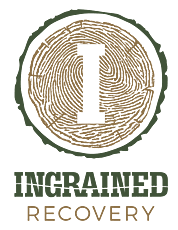Ingrained Recovery Offers Expert Care and Therapy Support
Picture this. You are creating simple yet colorful drawings and collages to help you work through your most complicated feelings. The crafting gives you a creative outlet, helping you express feelings that you cannot communicate in words.
As you create art, you discover that it’s just the thing to manage anxiety and melt away all your pent-up stress. Sound like too much fun to be true? Our art therapy worksheets can empower you to make these visual representations of your thoughts and feelings a reality.
Ingrained Recovery is a top addiction and mental health treatment center in Eastman, Georgia. We use science-backed approaches to resolve negative emotions, including art therapy activities. The art therapy worksheets we will provide are best when used in conjunction with a professional art therapist, especially for those with pervasive mental health concerns.
However, they are also an excellent way for friends and family members to increase their own well-being when supporting loved ones’ mental health concerns.
Please continue reading to learn about how art therapy activities can bring awareness and self-exploration into your life. Remember to download our art therapy worksheets!
Confidential Trauma and PTSD Assessment
Find Help At Ingrained Recovery
Types of Art Therapy Worksheets
One of the most beautiful things about creating art to work through complicated feelings is that there is no right or wrong. All it takes to follow the art therapy prompts and be honest while doing the work. Nobody will judge your drawing skills. Instead, it’s all about completing the exercise honestly. Don’t worry about getting your hands messy.
Also, keep your mind open to new ideas, such as art therapy worksheets that you can complete digitally to reduce cleanup time. Our art therapy worksheets are printable exercises. Feel free to download our free PDF forms.
Some keep an art journal, a collection of their sketches, drawings, and expressions of their emotions. Others complete the art therapy worksheets separately; either way of storing your creative efforts is fine.
Below are five art therapy prompts you might experience at Ingrained Recovery:
Draw Your Safe Space
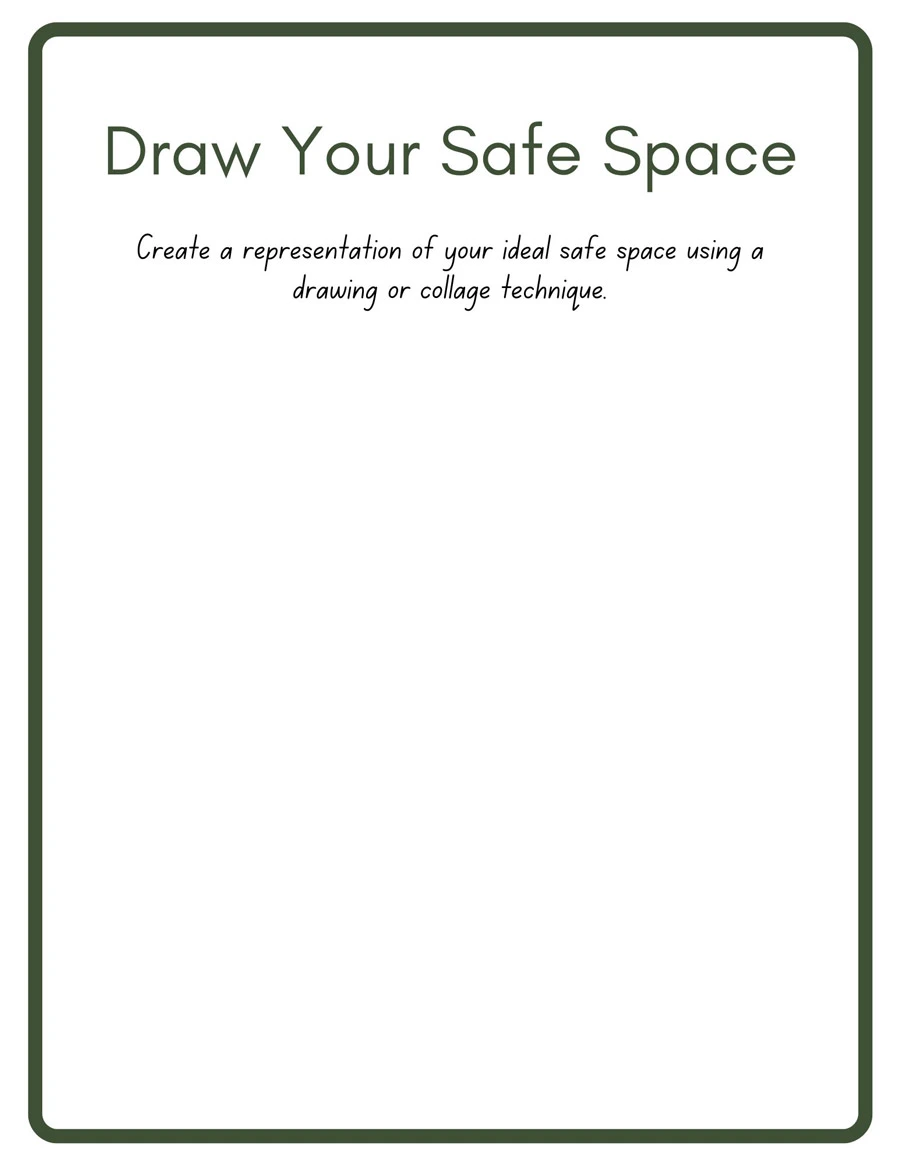
In some therapies, a therapist may challenge you to create a safe and calm place in your mind. This visual representation of the space has the same goal. It lets you escape from the moment when something triggers or tempts you. It’s also helpful during an anxiety or panic attack.
Retreating to this space when triggered will allow your future self to collect your thoughts and get your emotions under control. Once calm, you can re-engage with the world.
Besides drawing, you can paint or create a collage from old books or magazines. Making this spot as real and comforting as possible can feel freeing or like a spiritual experience.
Create an Emotion Wheel
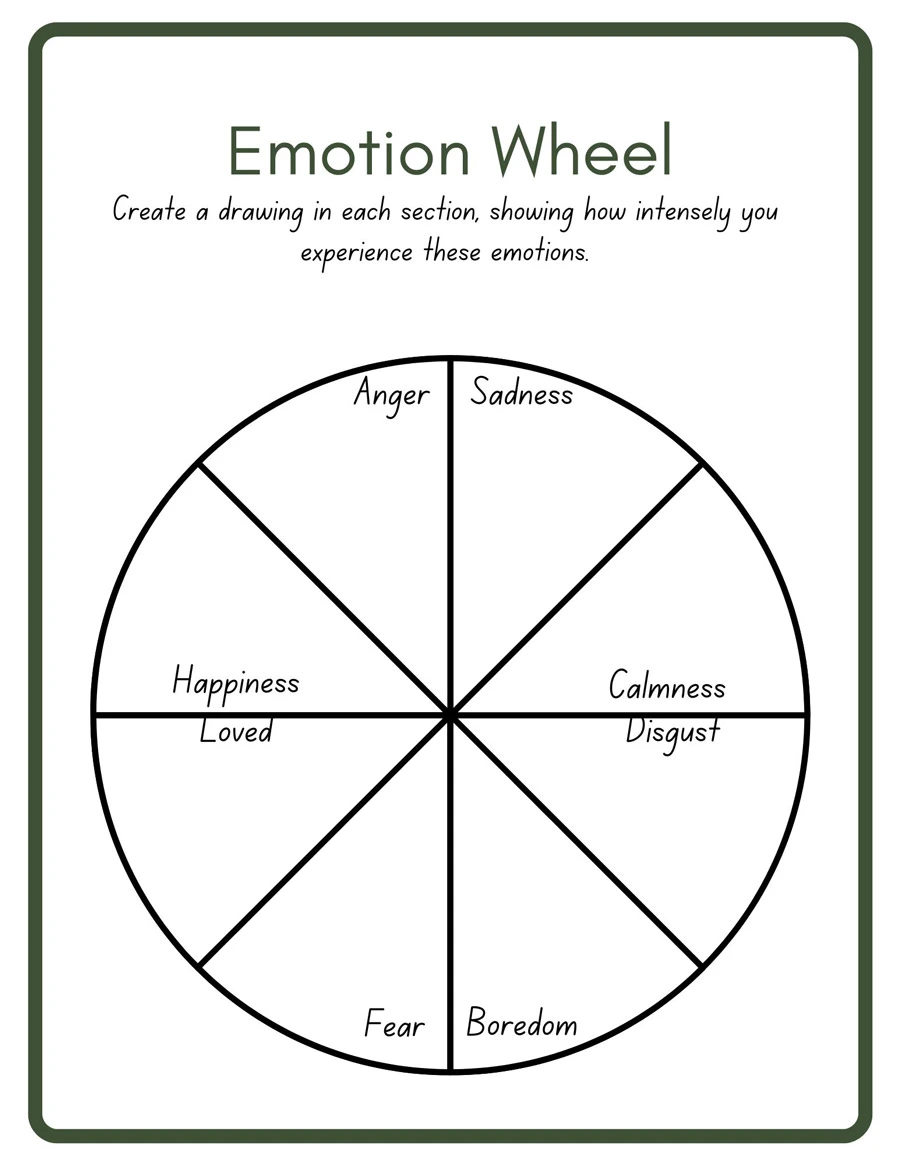
The emotions wheel is a classic art therapy worksheet that helps support self-awareness. It is beneficial for those trying to find a way to restore feelings of joy or happiness in their lives. The wheel makes space to draw representations of your anger, fear, or boredom. When you draw your emotions, you make them more relatable and have less anxiety about them.
Filling in the spots on the wheel challenges clients to explore and measure how intensely they experience several negative emotions versus happiness. It’s a simple exercise and requires few materials.
It’s one of the simplest art therapy worksheets. All you need to gather to complete the exercise is crayons, markers, or colored pencils, and a printed copy of the art sheet.
Make an Emotions Collage
The emotions collage helps people with specific diagnoses, such as anxiety or depression while they reflect on the feelings they experience at any given time. It’s a self-expression challenge that
Why is this effective?
Confronting any particular emotion that one might feel about their mental health disorder helps to disarm the associated anxiety or bad feelings about it. Paying attention to the exercise as it progresses can also be a form of meditation that helps you relax.
Let your creativity run free with this art therapy exercise. Tools you’ll need include scissors, markers or colorful pens for drawing or making captions, old magazines or books, glue, and a large poster board.
We are not providing art therapy worksheets for this activity because collages require a larger format and ample space for creativity to flow.
Try Mandala Coloring Books for Adults
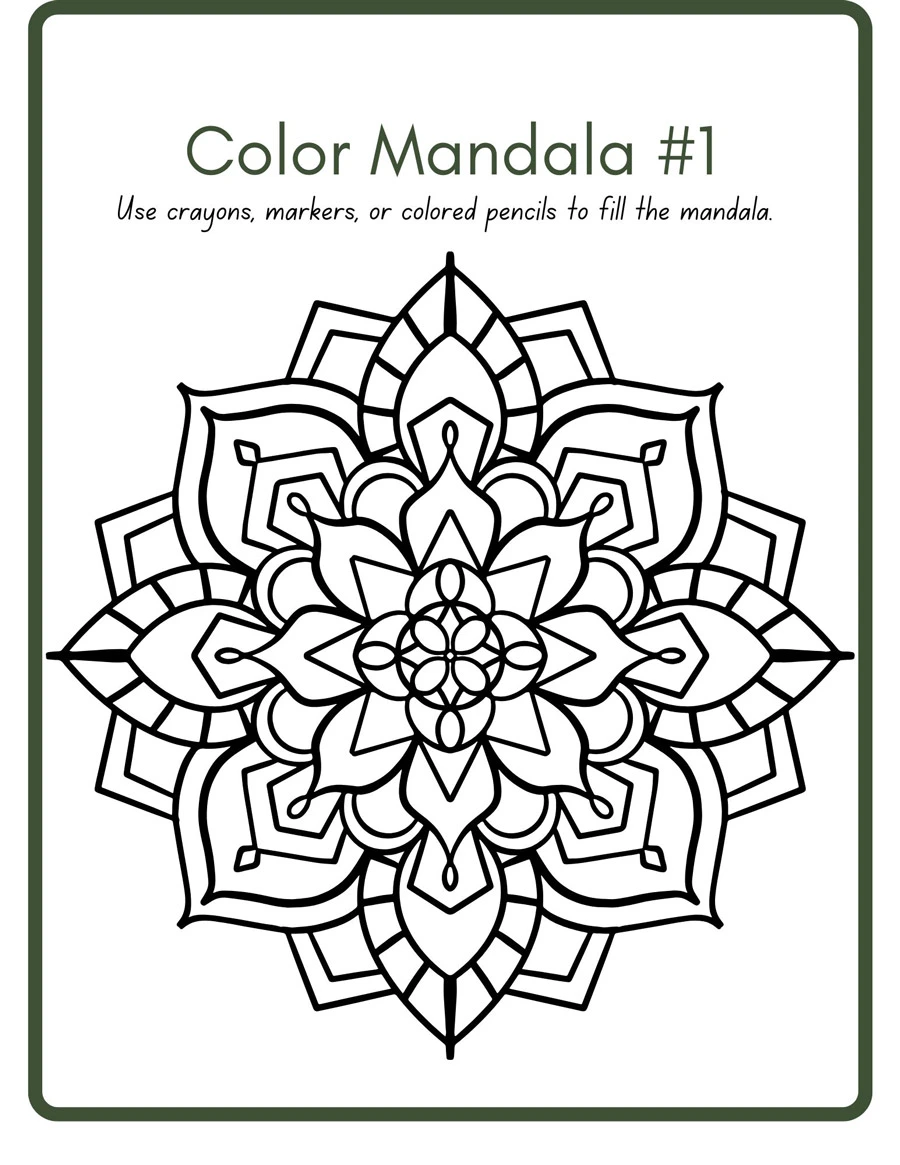
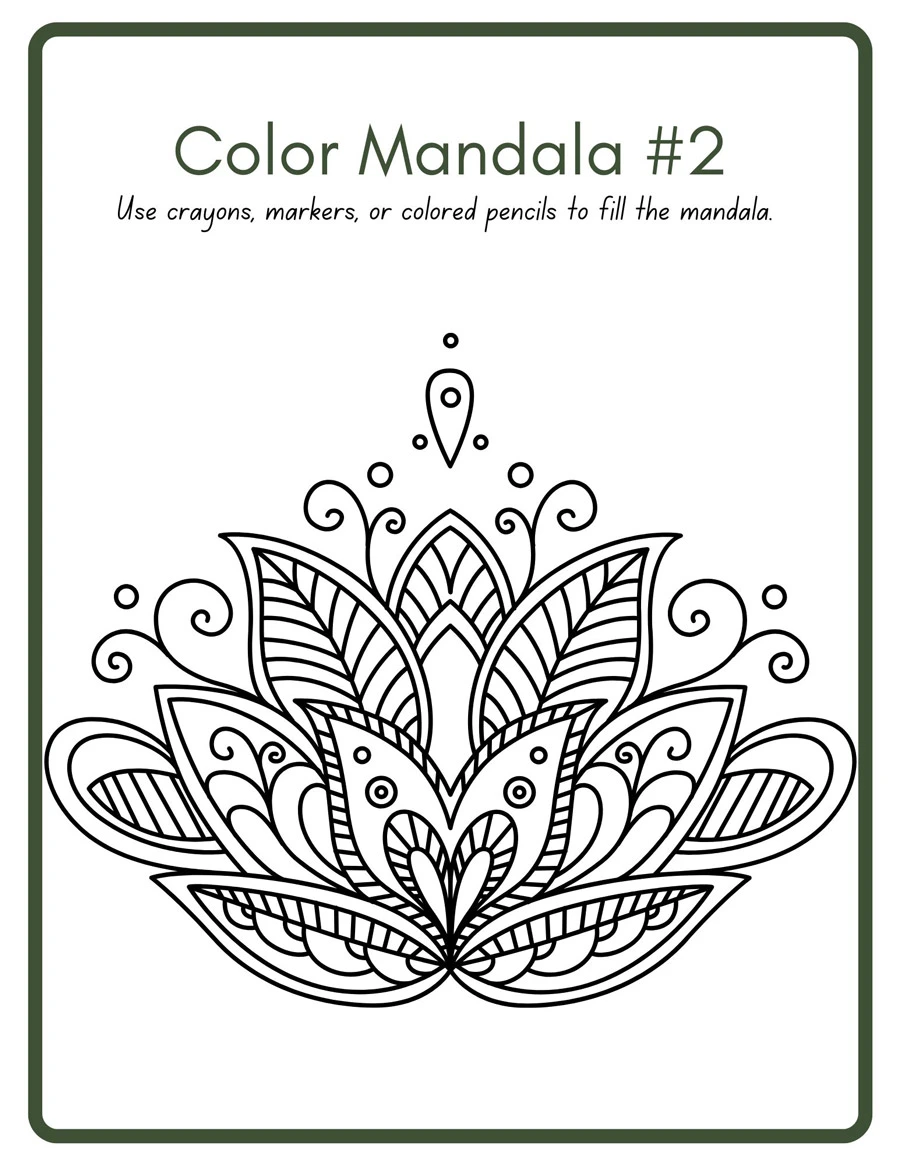
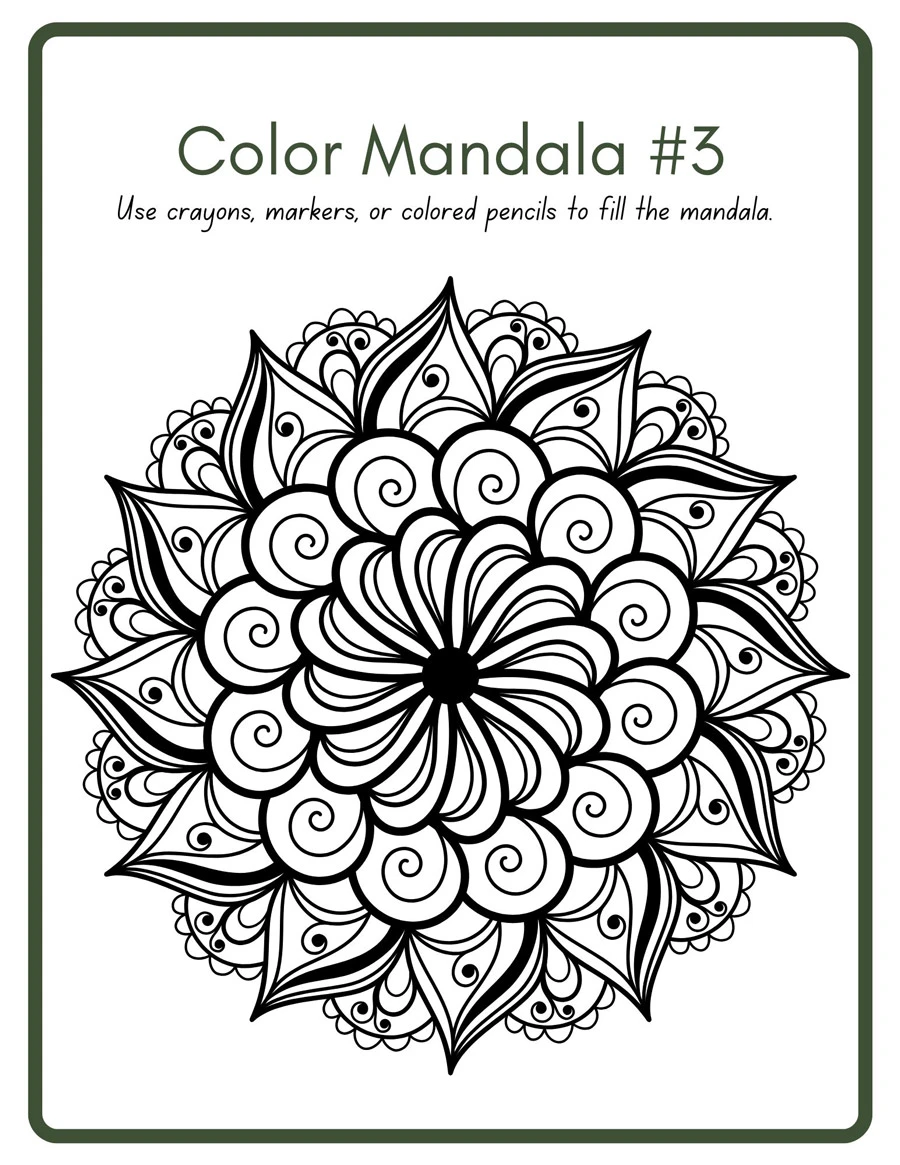
Some say that coloring Mandala coloring books in art therapy feel like a spiritual experience. That makes sense since mandalas represent the Universe in Hinduism and Buddhism. Art therapists include these because they are a great way to calm anxiety, relax, and increase client focus.
Use colored pens, markers, watercolor paints, or crayons. There’s no end to the creativity possible when filling in mandalas.
We have included three mandalas to complete with our art therapy worksheets.
Painting a Self-Portrait
Don’t limit yourself only to drawing. Painting is also an excellent medium in art therapy. Don’t let the technical aspects of painting hold you back from doing this art therapy exercise. Just go with the flow of the creative process and let the art take shape.
Painting empowers you to be creative from the moment you start. Before creating this art piece, you must decide on the paint type. Crafting often uses watercolors, acrylic, or tempera paint, allowing for various textures.
We are not including art therapy worksheets for this exercise. Stop by your local craft store and pick up a canvas that will hold the weight of the paint before attempting this art therapy activity.
Get Effective Trauma Treatment Options
Find Help At Ingrained Recovery
What Is Art Therapy?
Art therapy is an applied psychological theory that works well as a supplement with psychotherapy, behavior modification treatment, and positive psychology. It is also helpful for clients resistant to traditional therapy.
Unlike talking with a behavioral therapist, art therapy is hands-on. These tools promote emotional expression through creative processes.
The Role of a Professional Art Therapist
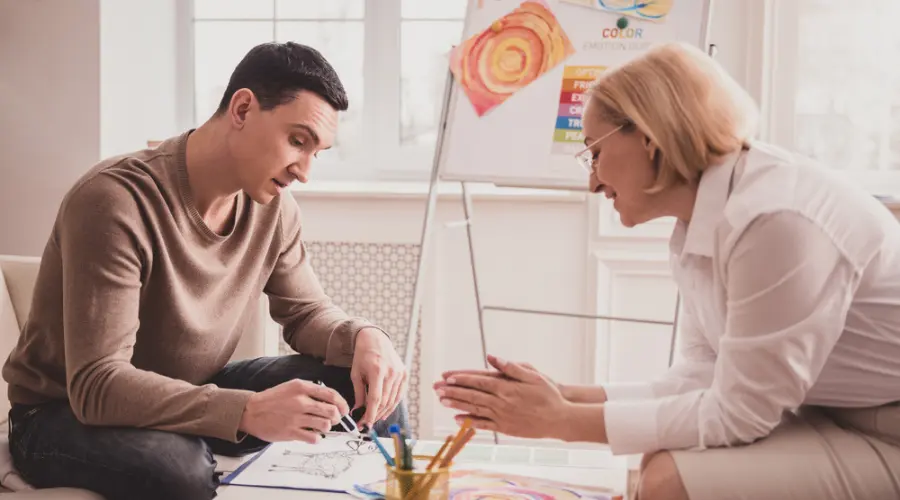
The main focus of art therapy is to help the client build on their strengths, confront their emotions, and express themselves. Art therapists are the professionals who apply the principles to understand their clients’ innermost needs to address them effectively.
These therapists work closely with clients with different materials provided to get a more complete picture of the client’s mental health.
They also take an integrative approach, sharing the progress made in art therapy with behavioral therapists, psychotherapists, and other professionals facilitating the client recovery journey.
In addition to this resource for both clients and clinicians, Ingrained also offers engaging and supportive Cognitive Processing Therapy worksheets to provide support and insights.
Benefits of Art Therapy Activities, Per the American Art Therapy Association
According to the American Art Therapy Association, using art to create a visual representation of one’s thoughts and emotions can help you cope with trauma and grief or help you through a crisis.
Besides supporting better mental well-being, it can help people with physical diseases, such as cancer or another terminal illness, deal with a hard-blow diagnosis.
Here are some of the specific benefits of working with art therapists:
Emotional Self-Expression
Art therapists give clients a non-verbal way to express feelings about events they’re not quite ready for talk therapy. Clients use their creativity to express negative feelings without verbalizing them. Art therapy activities create a safe space for them to sit with their emotions until they are ready to discuss them more openly.
Example of How Art Therapy is a Conduit for Free Expression
Imagine someone who lost a loved one unexpectedly due to an unforeseen tragedy. They have immense grief and need an outlet. They may share memories of happy moments or create a collage about the circumstances of the loss. Still, they’re unwilling to discuss the loss with anyone, at least not just yet.
Art Reduces Stress
Art can help find calming in times of stress. It provides a safe place to relax, be mindful of the task, and let go of the day’s worries. Clients can use a coloring book or other art mediums to replace the day’s negative feelings with positive ones.
Example of Art Therapy and Stress Reduction
Stress reduction could be the mother whose two children are adults but failing to thrive in adulthood. Supporting the siblings emotionally and financially is stressful and causes her anxiety-filled sleepless nights. But with colored pencils in hand, the art lets her visually express stress without snapping at their family members.
Art Therapy Activities Support Self-Awareness

The benefits of art therapy don’t end after the finger painting or coloring ends. As clients look at their creations, they can reflect on them. This helps each client gain deeper insight into their emotions and behaviors.
Example of How Art Can Help Someone Be More Self-aware
Picture a person prone to frequent overreactions and outbursts. Their behavior was so baffling that friends encouraged them to seek help. They didn’t realize the true depth of their rage until they stepped back from a drawing they drew in art therapy. It looked very dark and foreboding and used different colors than they imagined choosing.
Enhance Social Skills
Group art therapy activities provide a non-judgmental place where people with fewer social skills can feel safe. It creates an opportunity to share their work or collaborate with others. It’s a key life skill and brings one a sense of belonging to a community.
Example of Art Helping One Improve Social Skills
Consider someone who has experienced trauma and copes using a self-imposed isolation from others. The person knows they need help but doesn’t know how to ask for it. An art therapy group for trauma survivors lets them connect with others who understand their challenges.
While creating a traditional sand sculpture, they start supporting others. They eventually feel safe enough to share about the specific events that led to their PTSD.
More Positive Problem Solving
Some mental health disorders impede the client from solving problems free of emotion or bias. This person may often panic or fall apart from anxiety. Art therapy allows each client to use the creative process to make more positive choices and solve problems.
The skills gained in art therapy can draw a parallel to real-life situations, where opinions and relationships can interfere when a problem arises.
Example of How Art Therapy Helps Solve Problems
Imagine a client challenged to draw a tangled knot of colorful, entangled threads to represent their feelings. Instead, the client gets creative and decides to draw a picture that represents untangling the threads for a better future. The client steps back and visualizes how to untangle it.
The client sees how stepping back and looking analytically at what to draw next could also apply to untangling emotional knots in daily life.
Does Health Insurance Cover Art Therapy?

Thanks to the Affordable Care Act of 2010, or ACA, mental health services are considered an essential health benefit. The ACA decision allows for treatment and mental health support provided by a professional art therapist. Certain rules usually apply to this decision, including:
- Treatment services must come from a licensed art therapist, psychologist, or psychiatrist.
- The art therapy sessions must be a medical necessity, ordered by a physician or mental health specialist to qualify for coverage.
Don’t leave your insurance approvals to chance – call our admission department today. Our Admissions specialist will make the arrangements for you, including getting and pre-approvals needed to begin treatment.
Up To 100% of Rehab Covered By Insurance
Find Help At Ingrained Recovery
Call Ingrained for Art Therapy and Better Mental Wellness
You might hear some refer to art therapy as “alternative therapy.” Despite that label, art therapy is a science-proven, time-honored therapeutic modality. It’s effective for many mental and behavioral health challenges, including panic and anxiety disorders, depression, substance abuse, and emotional dysregulation.
Our holistic, integrative approach means we provide a customized treatment plan to ensure every client engages with the most effective therapies.
If you are interested in learning more about how art therapy can help you feel better about yourself, your life, and your relationships, call Ingrained Recovery’s admissions team today.
